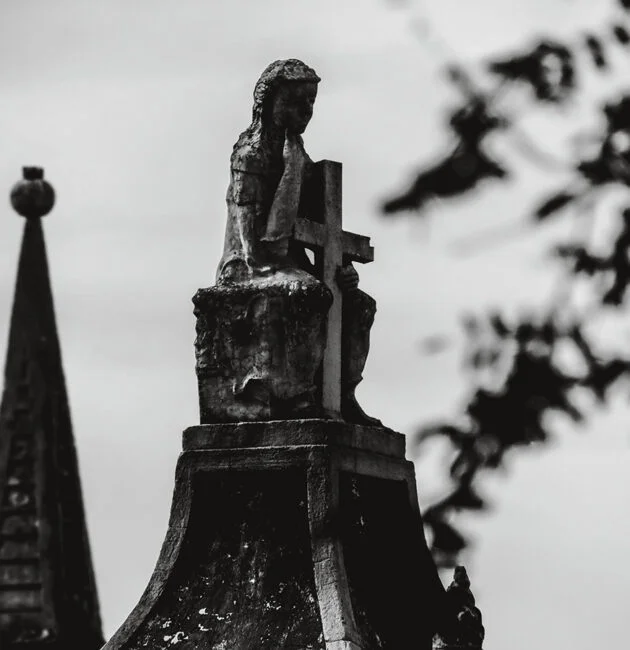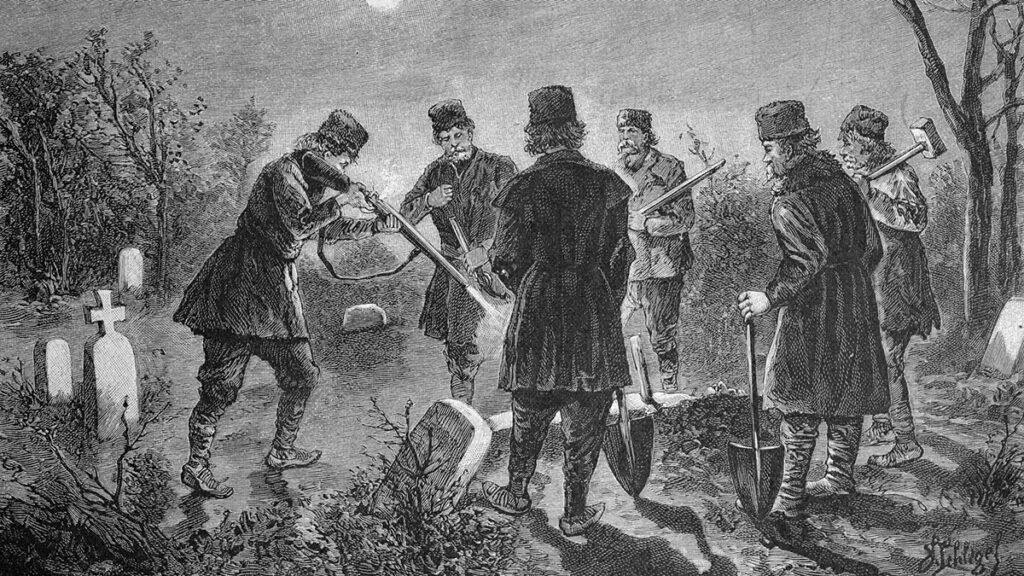
The Dark Allure of Vampires: Exploring Myths and Legends Worldwide
(Originally written on eerieexpeditionsmagazine.com)
Step into a world shrouded in darkness and mystery, where myths intertwine with reality, and the line between the living and the dead blurs. Vampires, the age-old creatures of the night, have haunted our imaginations for centuries. But have you ever wondered where these legends originated? Join us on a journey through time and across cultures as we unravel the lore of vampires. We’ll explore the myths and legends that have terrified and fascinated people around the world. From Mesopotamia to modern-day literature and film, discover the truth behind the tales that have endured through generations. Brace yourself for a captivating exploration of vampire lore.

The Origins of Vampire Myths
The first recorded vampire-like creatures appeared in Mesopotamia around 800 BCE. Known as the Edimmu, these spirits of the dead roamed the earth, seeking out victims to feed on while they slept. Unlike the romanticized vampires of today, the Edimmu were feared entities associated with sickness and death.
In Greek mythology, vampires were represented by Lamia, a child-eating monster who had an affair with Zeus and bore him children. Lamia’s story revolves around themes of feeding and reproduction, similar to many vampire legends. These early myths set the stage for the evolution of vampire lore in various cultures worldwide.

Eastern European Vampires Strigoi and Moroi
Eastern European vampires, known as Strigoi or Moroi, are vastly different from their Western counterparts. Instead of the charming, enigmatic figures popularized by modern culture, these vampires were more accurately described as walking corpses without souls. They possessed great physical strength and were often depicted as terrifying, decaying beings.
One of the most iconic elements of vampire folklore, the wooden stake, originated in Eastern Europe. It was believed that driving a stake through the vampire’s heart would prevent its spirit from leaving the body, thus ensuring it could not rise again. This practice highlights the deep-rooted fear and superstitions surrounding these mythical creatures.

The Chinese Jiangshi
In China, vampires are known as Jiangshi. These creatures are typically depicted as stiff-legged, hopping beings with long arms that grab their victims. According to Chinese folklore, Jiangshi are created when a person dies far from home and is not properly buried. The body becomes reanimated, transforming into a Jiangshi that preys on the living.
The Jiangshi legends emphasize the importance of proper burial rituals and the fear of the dead returning to wreak havoc among the living. These myths serve as a reminder of the cultural significance of honoring the deceased and the potential consequences of neglecting such traditions.

Aztec Beliefs Cihuateteo and La Llorona
Across the Atlantic, the Aztecs believed in the Cihuateteo, the ghosts of women who died during childbirth. These spirits were thought to return to the mortal world to haunt and harm the living. One of the most famous Mexican vampires is La Llorona, or “the weeping woman.” According to legend, La Llorona was a beautiful woman who drowned her children in a fit of jealousy after her husband left her. She is said to wander the banks of rivers, crying and snatching wandering children who happen along.
These tales reflect the Aztec’s emphasis on the spiritual significance of motherhood and the grief associated with lost children. The stories of Cihuateteo and La Llorona serve as cautionary tales, warning of the dangers of unchecked emotions and the supernatural consequences of tragic events.

Vampires in Modern Culture
Vampire stories have evolved significantly over time, but they continue to captivate audiences worldwide. From Bram Stoker’s “Dracula” to Anne Rice’s “The Vampire Chronicles,” these mythical beings have found a permanent place in literature. Television shows like “Buffy the Vampire Slayer” and “True Blood,” as well as movies like “Twilight” and “Interview with the Vampire,” have further cemented vampires’ place in popular culture.
These modern interpretations often blend elements of traditional vampire lore with contemporary themes, creating complex characters that resonate with today’s audiences. The enduring fascination with vampires speaks to our deep-seated fears and desires, making them timeless figures in storytelling.
Common Themes in Vampire Lore
Despite the cultural differences, several common themes run through vampire myths worldwide. One of the most prominent is the struggle between good and evil. Vampires often represent the darker aspects of human nature, such as greed, lust, and power, while their adversaries symbolize purity, courage, and righteousness.
Another recurring theme is the quest for immortality. Vampires’ eternal existence appeals to our fear of death and our desire for eternal life. However, this immortality often comes at a great cost, serving as a cautionary tale about the dangers of seeking power and life beyond natural limits.
The Symbolism of Blood
Blood is a central element in vampire mythology, symbolizing life, death, and rebirth. The act of drinking blood is often portrayed as a means of sustaining the vampire’s existence, but it also carries deeper symbolic meanings. In many cultures, blood is seen as a powerful life force, and consuming it can be viewed as a way of gaining strength, vitality, and immortality.
The exchange of blood between vampire and victim also represents a form of intimate connection, often blurring the lines between love and predation. This complex relationship adds another layer of intrigue to vampire lore, making these creatures both alluring and terrifying.

Vampire Hunting and Protection
Throughout history, various methods have been employed to protect against vampires and hunt them down. These practices often reflect the cultural beliefs and superstitions of the time. For example, in Eastern Europe, garlic and holy water were commonly used to ward off vampires, while silver was believed to have protective properties.
Vampire hunters, often portrayed as heroic figures, embody the human struggle against evil forces. Their tools and techniques, such as stakes, crosses, and sunlight, have become iconic elements of vampire folklore, adding to the rich tapestry of myths and legends.
The Evolution of Vampire Lore
Vampire myths have continuously evolved, adapting to the changing beliefs and values of different societies. While early vampire legends were rooted in superstition and fear, modern interpretations often explore deeper psychological and existential themes. This evolution reflects our ongoing fascination with the unknown and our quest to understand the darker aspects of human nature.
The Role of Vampires in Cultural Identity
Vampire myths often serve as a reflection of cultural identity and societal values. They provide insight into how different cultures perceive concepts such as death, the afterlife, and the moral consequences of one’s actions. By examining vampire lore, we can gain a deeper understanding of the shared human experience and the diverse ways in which we grapple with universal fears and desires.

The Future of Vampire Lore
As we look to the future, it’s clear that vampire myths will continue to evolve and captivate audiences. Advances in technology and storytelling will likely lead to new and innovative interpretations of these timeless creatures. Whether through literature, film, or other media, vampires will remain a powerful symbol of our deepest fears and most profound desires.
Vampire legends span the globe, offering a fascinating glimpse into the human psyche and our enduring fascination with the supernatural.
From the Edimmu of Mesopotamia to the Jiangshi of China, these mythical creatures have left an indelible mark on cultures worldwide. As we continue to explore and reinterpret vampire lore, we gain valuable insights into our shared fears, desires, and the eternal struggle between good and evil.
If you’re intrigued by these dark tales and wish to learn more, consider joining our community of folklore enthusiasts. Together, we can uncover the mysteries of the past and keep the stories of these captivating creatures alive for future generations.



